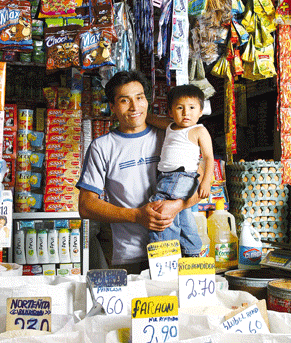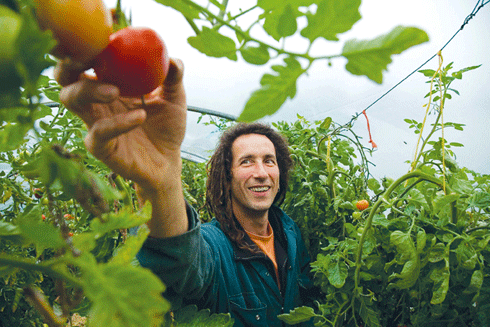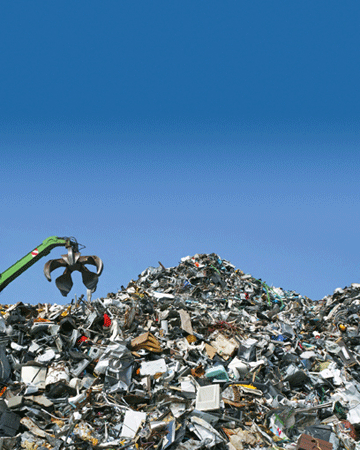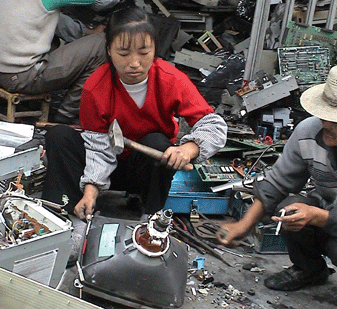
|
Published:
Sustainable commitments insulate financial leaders
Banks and super funds have been battered by the gale of the global financial crisis but not everyone is suffering. Alexandra de Blas looks at some sustainability leaders in the financial sector to see how they are beating their competitors.
Dutch based Triodos, one of the world’s leading sustainable banks, has had its best year on record. At the close of 2008, savings had risen by 20 per cent to ¤2 billion and bankruptcies were on a par with the previous year.
‘The number of new customers has risen by 30 per cent’, says Bas Rüter, Managing Director of Triodos Funds Management. ‘We’ve never grown so fast. People are fed up with their mainstream banks and are seeing us as a viable alternative.’
The big four banks in the Netherlands, with 80 per cent of market share, were shattered by the financial crisis. The Dutch Government came to the rescue and now owns ABN Amro and Fortis and a share of ING.
Triodos began in 1980 with the mission to stimulate sustainable development using finance as a vehicle. It funds companies, institutions and projects that add cultural value and benefit people and the environment.
Its equity funds have been hit by the global financial crisis (GFC), but its investment funds, outside the stock market – in renewable energy, organic agriculture, art and microfinance – are all making a profit.
In March, Triodos joined with 10 of the world’s leading sustainable banks to form the Global Alliance for Banking on Values. These banks are profitable, growing and appear to be ‘crisis resistant’.
Between them they have assets of over ¤10 billion and serve over seven million customers in 20 countries. Together they hope to lead debate on the banking models which could inspire profound change in the financial industry.
While they are minnows, Bas Rüter believes ‘size doesn’t matter. People are looking for alternative ideas.’
After 28 years Triodos is yet to make a loss or cut back on staff – evidence that it is possible, and financially safe, to think and act differently.
Here in Australia where the banking system is more tightly regulated, our ‘big four’ banks are in relatively good financial shape. They recently posted half yearly profits of $8.4 billion, six per cent down on last year.
For two years ANZ has held the top spot on the Dow Jones Sustainability Index – as the world’s most sustainable bank. Westpac was in the chair for five years prior and National Australia Bank is also among the leaders.
Terence Jeyaretnam, Director of Net Balance Management Group, an Australasian sustainability advisory and assurance firm, says, ‘Globally we’ve seen a shift away from sustainability commitments as the financial sector was hardest hit by the crisis. But here in Australia we are seeing at least the same amount of activity as last year.’
In 2008 ANZ introduced four social and environmental policies which set the standards for decision-making in sensitive sectors – including forests. The idea was to ‘transform’ businesses rather than ‘decline clients or deals’. For example, although ANZ declined to support the controversial $2 billion Tasmanian pulp mill in May last year, Gunns Ltd continues to be an important client.
The new ANZ Centre under construction in Melbourne’s Docklands will be the bank’s green flagship. The headquarters will emit 60 per cent less CO2 and use 60 per cent less water than the standard office block. Blackwater recycling and rainwater harvesting will be features, as will 1000 square metres of solar panels, wind turbines, a green roof and an air conditioning system that uses cool water from the Yarra.
Despite its socially responsible intentions, ANZ’s restructure in 2008 led to over 1000 staff leaving the Australian business. Westpac, meanwhile, has put its restructure on hold. Both Mike Smith and Gail Kelly are relatively new CEOs at ANZ and Westpac, respectively, and it will be interesting to watch how they drive sustainability as the recession progresses.
At the smaller end of the spectrum, credit union mecu is punching above its weight on the sustainability front. The only credit union with a Standard and Poors credit rating, it aims to be Australia’s pre-eminent socially responsible bank.
A year ago, in Victoria’s west Wimmera, mecu established a Conservation Landbank – a world leading initiative that protects prime conservation habitat. Mecu uses the Landbank to offset the biodiversity lost due to new home constructions, and tree planting mitigates climate change.
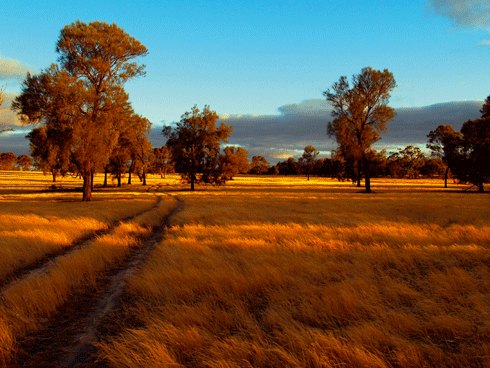
|
|
Minimay in Victoria’s west Wimmera, home to remnant buloke woodlands, is the first property to be deposited into mecu’s Conservation Landbank. Credit:
Sharon Maloney ©Tribal Pty Ltd
|

|
|
Minimay’s buloke trees provide vital habitat for red-tailed black cockatoos which are threatened in southern regions of Australia. Credit:
mecu
|
On the customer side, mecu’s Eco Pause program allows home loan repayments to cease for three months, or halve for six, while borrowers pay for green upgrades such as water tanks or solar systems.
Mecu was also the first car loan provider globally to offset the CO2 emitted from all the vehicles it finances. Energy efficient cars and homes attract reduced interest rates on loans.
Mecu is among the most proactive financial institutions working in the affordable housing sector and is evaluating more than $100 million in project finance.
‘The GFC has affected our margins,’ says Rowan Dowland, mecu’s General Manager Development, ‘but we are on track to achieve the same level of profitability as June last year. We are recording our highest membership growth in six years – people want to bank with an institution whose values match their own.’
If some proposed mergers proceed, mecu will have $2.4 billion in assets and 145 000 members by August.
For VicSuper, one of Australia’s largest public offer superannuation funds with over 245 000 members and $5.7 billion in assets, sustainability has been a central operating principle since 2001. Since then it has invested 10 per cent of its shares in leading sustainability companies both in Australia and overseas. Last year it lifted the international component to 20 per cent by bringing in Generation, a fund co-founded by Al Gore.
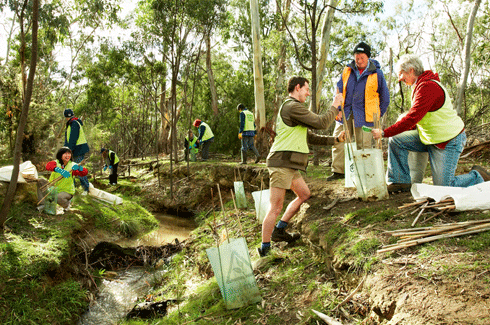
|
|
VicSuper staff work on a land management and restoration project with one of VicSuper’s community partners, Conservation Volunteers Australia. Credit:
VicSuper
|
‘We started by putting our toe in the water,’ says Bob Welsh, VicSuper’s Chief Executive. ‘We would like to ramp these percentages up over time, but members can already invest 100 per cent in leading sustainability companies if they wish.’
The GFC has brought a big drop in member account balances. This has also led to a drop in fees and as a consequence there is less money to run the business. But VicSuper will maintain services and staff by finding innovative ways to ride out the recession.
The fund is about to introduce a new climate-friendly investment portfolio that will maximise returns while reducing carbon exposure by 50 per cent. ‘It’s a way we can send capital to those companies who are doing well in a way which produces less carbon.’
For Bob Welsh the GFC is an opportunity to do things differently and the financial sector is well placed to show leadership, particularly on climate change.


